Our editors independently select these products. Making a purchase through our links may earn Well+Good a commission
It’s early in the new year, which means your co-worker is probably at the height of her juice cleanse, your BFF has joined the Veganuary crowd, and now you’re contemplating a serious overhaul of your eating habits.
The good and bad news is that there are a ton of diets out there, ones that promise to blast your belly fat and even get you skinny in eight hours. But many of them them fall way short health-wise, which is really what it’s all about, no? We tapped renowned nutritionist and author, Keri Glassman, RD, to get her take on the most popular eating approaches out there, from Atkins and Dukan to Paleo and Raw. (Not included is the alkaline diet since the body’s pH balance is about more than just eating habits.)
She’s dishing on critical issues like nutritional variety and portion control. Here—in alphabetical order—is what you need to know about all of them.
Keep reading to see how the most popular diets stack up nutrition-wise.
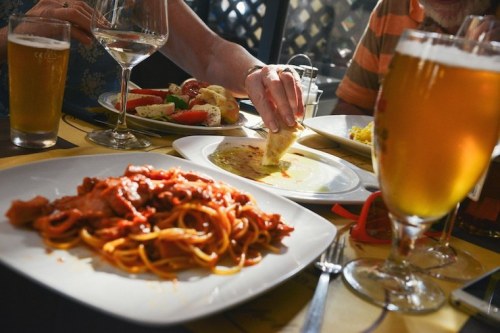
1. 80/20
The diet in a nutshell: It’s pretty straightforward: Fill your plate with nutrient-rich foods 80 percent of the time, and enjoy your favorite slightly less nutritious foods the other 20 percent.
What you eat: Followers should mostly be eating all things healthy such as fruits, veggies, protein, healthy fats, and legumes.
What you don’t eat: Nothing is totally off the table, so to speak, as long as you are filling up on food that’s good for you 80 percent of the time.
Glassman’s take: “As I always say, exercise and nutrition are like a difficult dance, and getting the proper balance of the two is key to nailing your hardest move,” she says. “All I can say for sure is that the number is going to be a little bit different for each person. For some it may be 60/40, and others it may be 90/10. You will have to figure out the balance that works best for you.”
Reported famous followers: Gisele Bündchen and Tom Brady
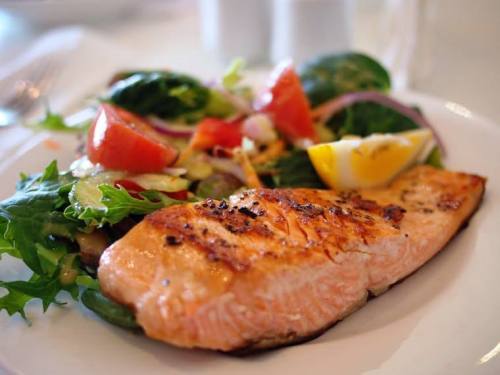
2. Atkins
The diet in a nutshell: This early 2000s sensation is synonymous with one thing: cutting carbs. According to Atkins, limiting carbs (i.e. sugar) helps the body burn fat. “This approach leaves the body steadily fueled, and weight is lost, even when more calories are being consumed,” the website claims.
What you eat: While the foods change during two phases of about weeks each, approved staples throughout include fish (think salmon, flounder, and halibut), unprocessed meat, eggs, cheese, and certain vegetables.
What you don’t eat: In the beginning, Atkins-ites limit themselves to about 20 daily net carbs, but by the end, the diet permits 80 to 100 daily net carbs, including fruits, starchy veggies, and whole grains.
Glassman’s take: “I like that you’re not eating sugar or processed white bread. But the foods you focus on are not necessarily healthy,” she says. “There’s no reason you need to eat high-fat meats and as much cheese as you want just because you’re taking out unhealthy carbs.” She’d also like to see the diet emphasize grass-fed and organic meat options.
Glassman’s also anti-cutting all healthy grains. “There is still room for more carbs—the right ones—from the very beginning,” she says. “One of the reasons people gain weight back is because they’re so restrictive, then add back (or binge!) and gain.”
Reported famous followers: Kim Kardashian and Sharon Osbourne
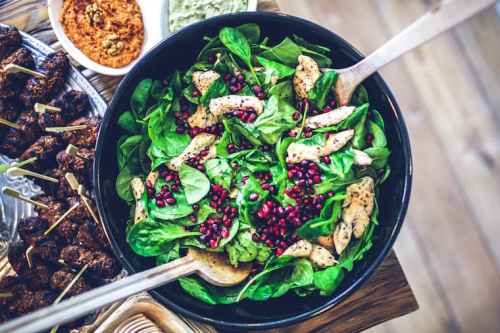
3. DASH
The diet in a nutshell: Ranked the number one diet by health experts in 2016, the DASH diet is aimed toward people who are trying to be extra mindful when it comes to keeping their blood pressure down.
What you eat: Fruits, veggies, lean protein, and legumes should make up the bulk of your plate.
What you don’t eat: Anything high in sugar or processed.
Glassman’s take: “While overall it’s a healthy plan, it has a fairly low suggestion for fat intake and recommends nonfat or low-fat dairy, compared the the full fat dairy I would normally recommend for my clients,” she says.
Reported famous followers: Jessica Simpson, Dr. Oz, and Jennifer Hudson

4. Dukan Diet
The diet in a nutshell: Named after the French physician Pierre Dukan, this diet’s heavy on protein—and do’s and don’ts. “During his research, Pierre Dukan identified 100 allowed foods that contain the essential nutrients for our bodies that have tremendous benefits and are rich in protein, low in carbohydrates, and fat,” the Dukan website says.
What you eat: It includes 100 (approved foods: 68 animal-based proteins (like chicken, cod, eggs, beef, pork, and fat-free dairy products), and 32 vegetables (think artichokes, bean sprouts, carrots, Brussels sprouts, kale, and okra). Followers can eat as much of each as they want.
What you don’t eat: Foods that aren’t on that list.
Glassman’s take: Though most of the okay-ed foods are pretty healthy, “it’s essentially a form of Atkins—no real emphasis on the quality of ingredients, like organic,” Glassman says. “Also, the ‘100 allowed foods’ don’t make much sense to me.” There’s no magic to them, she says. It also ignores many superfoods.
Reported famous followers: Jennifer Lopez and Kate Middleton
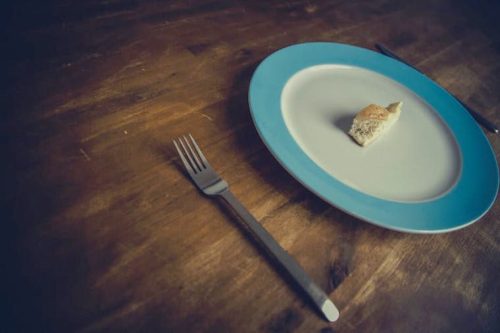
5. The Fast Diet
The diet in a nutshell: Instead of having meals throughout the day, adherents of this United Kingdom export follow a kind of feast-and-famine pattern, eating normally on certain days of the week, then drastically cutting calories on others.
What you eat: With 5:2 intermittent fasting, you eat normally five days a week and diet two days a week, cutting your calorie intake for those two days to a one-quarter of [your] normal level,” The Fast Diet website explains. “This means that on, say, a Monday and a Thursday you will eat 500 calories if you are a woman, 600 if you are a man.”
What you don’t eat: On certain days? Breakfast, lunch, etc.…
Glassman’s take: “I think it can work for people who need very defined rules,” she says. “But you can starve yourself, slow your metabolism, and then end up gaining more weight.”
And Glassman doesn’t like that proponents potentially forgo a lot of nutritious foods on fast days—so, they don’t get the blueberries they’d typically have in, say, their filling breakfast smoothie, or all the good stuff they’d get in their typical kale salad lunch.
Reported famous followers:Benedict Cumberbatch and Miranda Kerr
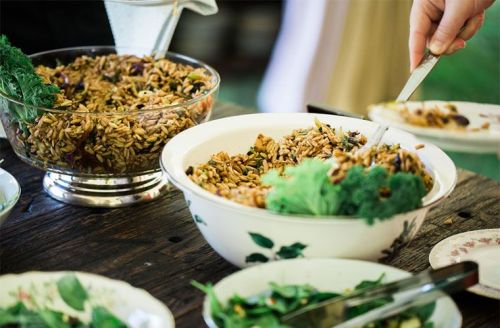
6. Low-FODMAP
The diet in a nutshell: Researchers found that avoiding different types of short-chain carbohydrates could eliminate bloating and digestive distress for people with IBS. Followers cut one group of short-chain carbs at a time to see which ones affect their body.
What you eat: The Low-FODMAP diet is a complicated one to follow because there are high-FODMAP foods (AKA foods to avoid) in every food group. Fortunately, the low-FODMAP list is long and includes things like bok choy, lentils, chicken, salmon, and brown rice.
What you don’t eat: Again, it’s a long list and even some healthy foods don’t make the cut. Some major no-nos: garlic, onions, fruits high in sugar, wheat, and dairy.
Glassman’s take: “I’m all about a gut healthy diet, especially if you’re suffering from IBS. However, remember that this isn’t a quick fix,” she says. “Adjusting to this diet is a process, but it can be empowering for people to find the certain foods they should be eliminating from their diet to be able to control their symptoms.”

7. The Macrobiotic Diet
The diet in a nutshell: Macrobiotic eating, which was popularized in the United States by Michio Kushi, has its roots in Japan. It favors eating a mostly plant-based diet of whole, cooked, organic foods, and stresses the importance of reducing toxins. It was also likely the first diet with a food-as-medicine philosophy, and is still used today to lower disease risks and treat illnesses.
What you eat: It’s very similar to vegan and vegetarian approaches (more on those later), in that it includes fruits, vegetables, sea veggies, and whole grains—but also fish. The regimen also emphasizes the type of cookware you can use—glass, wood, ceramic—and cooking with organic grains and veggies.
What you don’t eat:Dairy, eggs, poultry, red meat, as well as artificial and processed foods. And no veggies from the nightshade family, like tomatoes or eggplant.
Glassman’s take: “If you’re following it carefully, it’s excellent. There’s a focus on so many different foods,” she says.
The downside, you don’t eat a ton of fresh veggies. And in Glassman’s eyes, the diet comes with lot of rules, like which percent of your diet, by weight, certain food groups should constitute—although that’s only the most orthodox interpretation of the diet. “To me, it’s a little bit more proactive, thinking about foods you should be eating as opposed to foods you can’t,” she says.
Reported famous followers:Madonna and Gwyneth Paltrow

8. Mediterranean
The diet in a nutshell: With its focus on good fats from fish and olive oil, and antioxidants from veggies and wine, it’s been a very appealing choice far beyond the actual Mediterranean. It’s also been subjected to many studies, which found it helps protect against bone loss, decreases the likelihood of heart disease, and boosts longevity.
What you eat: Think healthy European—lots of fruits and veggies, beans, nuts, olive oil, and whole grains. (And yes, red wine, in moderation.)
What you don’t eat: You don’t chow down on red meat, sweets, cheese, milk, or potatoes—very often. Nor do you eat a lot of refined carbs. (Arrivederci, giant bowls of pasta.)
Glassman’s take: “I’m a huge fan of this one,” she says, largely because it’s really a lifestyle, not a strict prescription. “It’s based on real foods there’s nothing diet-y about it,” Glassman says. “It’s heavily plant-based, even though it’s not all plant-based. I love the healthy fats. I like that it includes alcohol, which makes it realistic.”
The only negative, in her eyes, is that in order to overhaul their eating patterns, some people need a diet-diet—something specific and structured in a way the Mediterranean plan isn’t (which is why you’ll see so many versions of it).
“If you have trouble with portions, you might need to learn about that using another method, even if you incorporate foods from the Mediterranean style,” suggests Glassman.
Reported famous followers: Brooke Burke and Rachel Ray
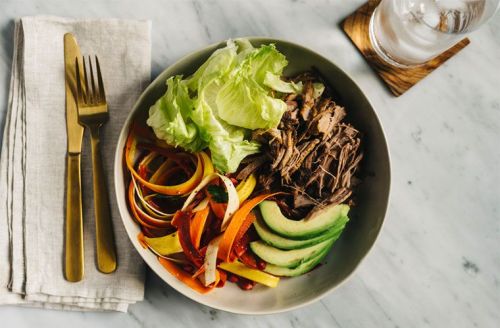
9. Paleo
The diet in a nutshell: The idea is to eat purely, emulating the eating habits of Paleolithic people, and sticking with available-back-then staples. It’s a favorite of the CrossFit crowd.
What you eat: High-quality, grass-fed meats, vegetables, and fruit, then thinking seasonally (so, squash in the winter and juicy tomatoes in the summer).
What you don’t eat:Dairy, legumes, potatoes, grains, and corn—plus refined sugar and manufactured foods.
Glassman’s take: “I happen to love Paleo,” she says. “I love that it doesn’t include sugar; I love that it’s real food; I love that there are lots of veggies and healthy fats. I even love that there is meat—and [an emphasis on] choosing the best source. I think many people need meat to be satisfied.”
Glassman’s only gripe is that, once again, it’s restrictive, which is why she recommends what she calls “Paleo-plus”—including a bit of dairy, like Kefir or Greek yogurt a few times a week, and legumes, which provide fiber and antioxidants, and can be a satisfying meat alternative.
Reported famous followers: Jessica Biel and Megan Fox
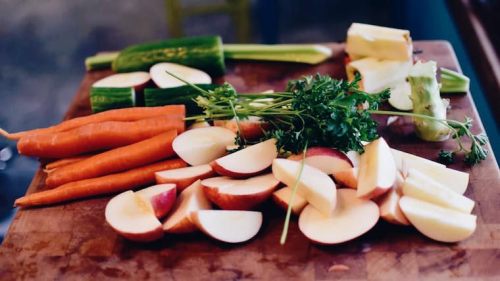
10. Raw
The diet in a nutshell: It’s all about plant-based foods that aren’t heated above 115–118 degrees to preserve their living nutrients, such as enzymes, minerals, and antioxidants.
What you eat: Fruit and veggies, lentils, chickpeas, adzuki beans, mung beans, and coconut in all forms, nuts (except peanuts), and superfoods.
What you don’t eat: Anything heated up.
Glassman’s take: It’s produce driven, which is great. “But it’s incredibly difficult for many people to do full-on, and I don’t think it’s necessary,” she says. In Glassman’s eyes, there’s a serious hassle-factor, unless you’re very diligent or have someone who can help you prep foods in new and interesting ways.
“A combination of raw food and cooked food is not only more reasonable, but there are some foods where the nutritional value goes up when you cook it,” Glassman says.
Reported famous followers: Donna Karan
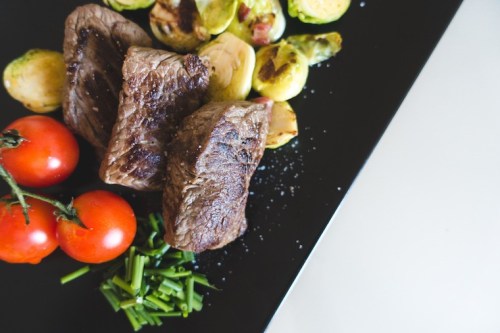
8. The South Beach Diet
The diet in a nutshell: Like Atkins, this is a doctor-created diet that recommends a fairly specific, low-carb plan with different restrictive phases. It’s explicitly used for weight loss.
What you eat: You can eat fish, chicken, turkey, beef, vegetables like artichokes, eggplant, broccoli, and zucchini, as well as dairy, cheese, nuts, and seeds. The South Beach Diet also makes many food items, like bars.
What you don’t eat: In phase one, which lasts two weeks, whole grains and fruits are out, but by phase two—which you stick with until you reach your goal weight—they’re added back in.
Glassman’s take: “I like the proportion of nutrients, I like that you eat consistently throughout the day, I like the portion control they educate you on, and I like that they take out the sugar,” Glassman says.
Her critique? “I think that it’s still a little diet-esque and specific to follow, as opposed to a lifestyle,” she says. “I don’t really love the sugar-free, processed foods they sell. But learning about portions is a benefit.”
Reported famous followers:President Bill Clinton (at one point in time)

11. Vegan
The diet in a nutshell: No animal products, often for ethical or health reasons. According to The China Study—a long-term investigation into eating habits and health in that country that made a strong case for the vegan lifestyle—”people who ate the most animal-based foods got the most chronic disease. People who ate the most plant-based foods were the healthiest.”
What you eat: This is the ultimate plant-based plan—lots of fruits, vegetables, nuts, seeds, and whole grains, plus carbs of all stripes.
What you don’t eat: Animal products of any kind, including dairy and meat, and often honey, since its “animal”-derived.
Glassman’s take: “I love that a vegan diet includes loads of fruits, veggies, nuts, and healthy fats,” Glassman says. “For some people, though, it’s restrictive and hard for them to meet certain nutrient needs.”
Overall, Glassman says it comes down to the person—some may find they feel sluggish without a certain amount of animal protein. “I am not saying you can’t meet your nutrient needs being vegan, but I think if you’re not a responsible vegan, it can be difficult,” she says. Eschewing meat and ice cream, but filling up on processed foods, bagels, and Diet Coke instead is not a good thing.
Reported famous followers:Alicia Silverstone
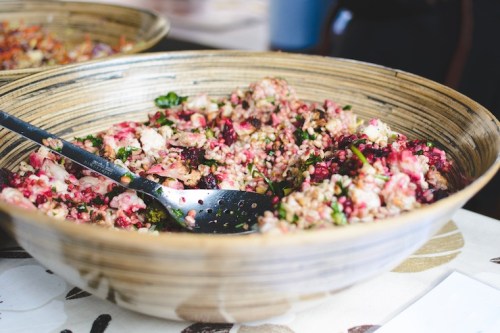
12. Vegetarian
The diet in a nutshell: Vegetarians eschew meat.
What you eat: Fruits, veggies, grains, and nuts, as well as eggs, dairy products like milk, yogurt, and cheese. Carbs and packaged foods are up for grabs, too.
What you don’t eat: Meat, poultry, and fish.
Glassman’s take: “If you are a responsible vegetarian, and get a wide variety of all nutrients, it is a very healthy lifestyle,” Glassman says. “I just don’t like when people consume too much (and processed!) soy, or skimp on nuts and beans and go for refined pasta instead. “But if followed properly?” she says. “Amazing!”
Reported famous followers: Jessica Chastain and Kristen Wiig

13. Weight Watchers
The diet in a nutshell: It’s an incredibly popular weight-loss program offered in nearly every American town. Rather than prescribing which foods to eat or avoid, it uses a point-based system for them—and for you.
What you eat: Basically anything that’s within your daily allotted points, which are based largely on your current weight, age, and how active you are. You might have 21 daily points—and 1/4 cup of dry-roasted nuts is six points, a grilled chicken breast is three points, and so on. The company overhauled its points system a few years ago, so now there’s an emphasis on real, whole foods, not just calories.
What you don’t eat: Anything beyond your daily point allowance, which changes depending on whether you’re trying to lose weight (fewer points) or maintain it (a few more to play with).
Glassman’s take: “It has changed so much,” Glassman says—and that’s a positive in her eyes. “I don’t like the Weight Watchers packaged foods, I think they are loaded with junk.” But, if you just use the meal plan and emphasize fruits, veggies, and portion control, she’s a fan.
Reported famous followers:Jennifer Hudson, Jessica Simpson, and Charles Barkley

14. Whole30
The diet in a nutshell: Founder Melissa Hartwig summarizes The Whole30 Diet as “a reset for your health, your habits, and your relationship with food.” Followers weed out an extensive list of foods for one month and then slowly add them back in, seeing how exactly their body responds to different things.
What you eat: Veggies, protein-heavy foods like eggs and lean meat, and fish all make the cut.
What you don’t eat: Sugar, alcohol, dairy, quinoa, chickpeas, and peanut-butter are all on the foods to avoid list.
Glassman’s take: “I’m a fan because of it’s focus on lean meats, lots of vegetables, and healthy fats,” she says. “It might be a diet that is hard to stick to forever, but it will definitely build habits towards living a healthy lifestyle.”
Regardless of what diet you choose, here’s an east detox recipe all eaters can sip daily. Plus, here’s how to build the ultimate anti-inflammatory meal.
Sign up for the Well+Good SHOP Newsletter
Get exclusive deals on wellness, beauty, fitness, and food products that have been hand-picked by our editors.
Got it, you've been added to our email list.







